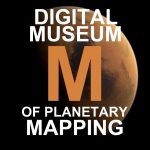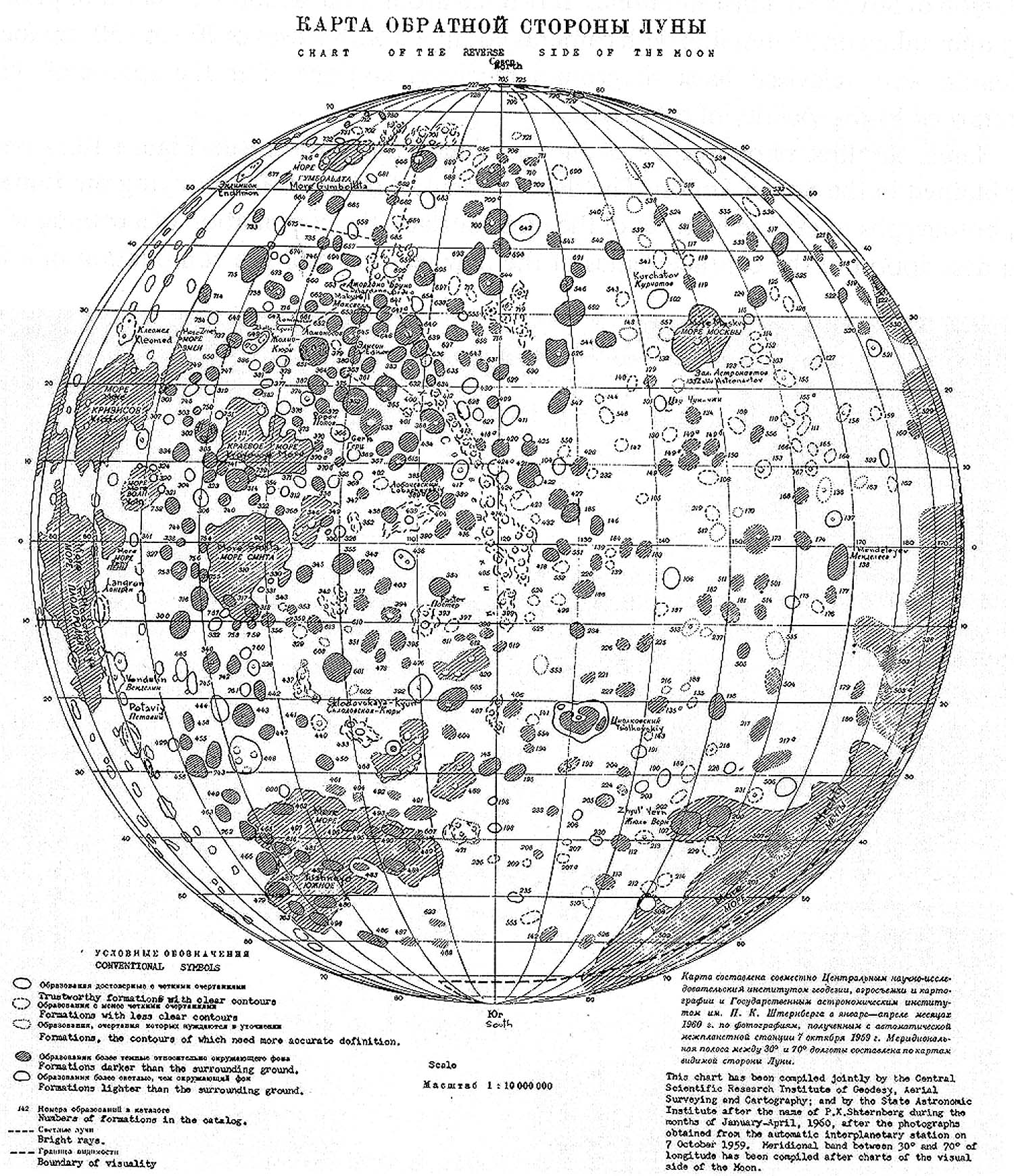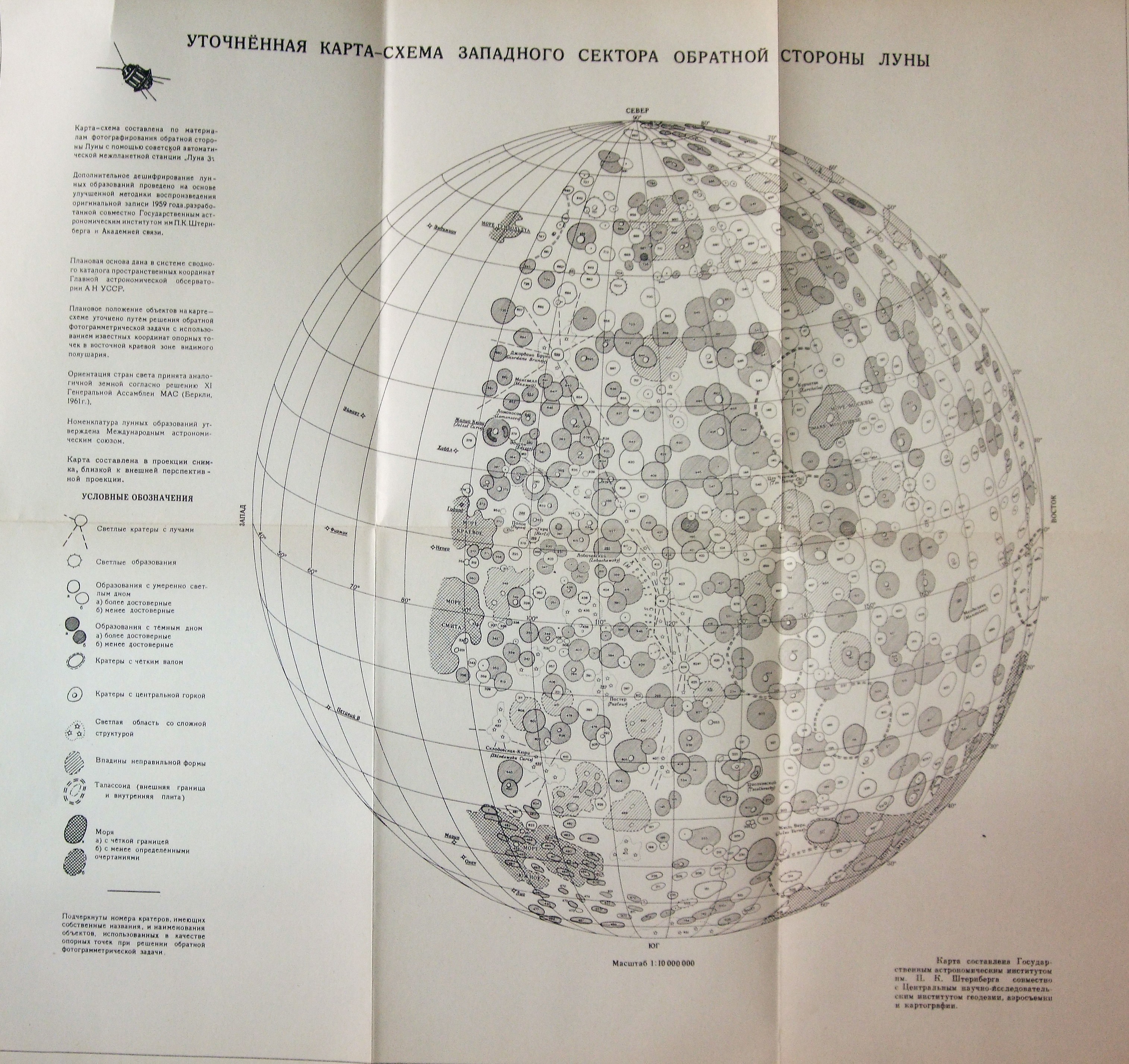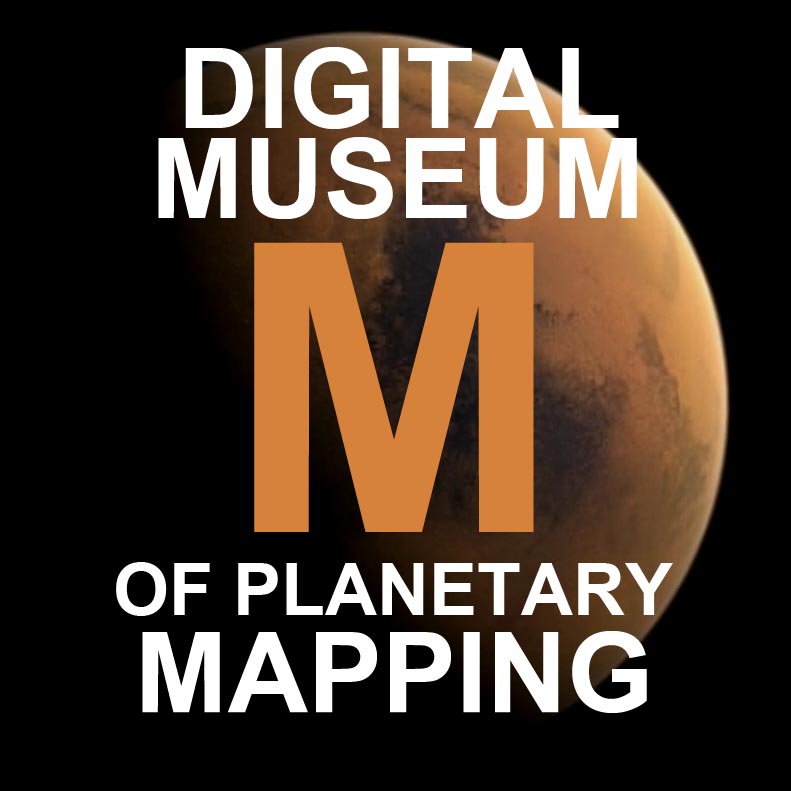Sternberg Institute’s Chart of the Reverse Side of the Moon (1960)
Atlas Obratnoj Storony Luny (Part 1)
Akademiya Nauk SSSR Moskva 1960.
Includes a map of the far side in 4 pages
1:10 000 000
(It is centered at 120 deg, partly overlaps the near side)
Cartographic editor: Yurii Naumovich Lipsky
Based on Luna-3 photographs
Comment by Zh. F. Rodionova:
За всю историю картографирования Луны до начала космических полетов (т.е. примерно за 350 лет) было создано около 120 рисунков, карт и атласов видимой стороны Луны. Интересно, что в России в этот период, насколько нам известно, не было составлено ни одной лунной карты. Однако, первая карта обратной стороны Луны была создана именно в России (СССР) по самым первым снимкам, переданным космическим зондом “Луна 3” в 1959 г. Впервые увиденные землянами детали обратной стороны Луны показаны на карте условными знаками, их координаты определены в единой селенографической системе, а 18-ти крупнейшим объектам присвоены наименования. Полученные на Земле по радиоканалу снимки были сильно искажены помехами, но методика, разработанная в Государственном астрономическом институте им. П.К. Штернберга (МГУ) под руководством Ю.Н. Липского (1909-1978) позволила выявить множество деталей рельефа невидимого полушария. На этой карте впервые появились Море Москвы и Море Мечты, кратеры Циолковский, Джордано Бруно, Менделеев, Склодовская-Кюри и другие. Светлое протяженное образование было названо Хребтом Советским, однако оно не подтвердилось последующими съемками.
During entire history of cartography of the Moon prior to the beginning of space flights (i.e. approximately in 350 years) it was created about 120 figures, maps and atlases of the visible side of the Moon. It is interesting that in Russia during this period, as far as we know, it was not comprised not one lunar map. However, the first map of the far side of the Moon was created precisely in Russia (USSR) on the very first photographs, transmitted by the space probe of “Luna-3” in 1959. For the first time seen by earthlings components of the far side of the moon are shown on the map by arbitrary symbols, their coordinates are determined in the united selenographic system, and to the largest 18 objects are appropriated designations. Photographs obtained on the Earth on the radio channel were strongly distorted by interferences, but the procedure, developed in the state Sternberg Astronomical Institute (MGU) under the management Yurii Naumovich Lipsky (1909-1978) made it possible to reveal many components of the relief of invisible hemisphere. On this map for the first time appeared the sea of Moscow (Море Москвы) and the sea of Dream (Море Мечты), craters Tsiolkovskiy, Giordano Bruno, Mendeleyev, Sklodowska-Curie, etc. The bright extensive formation was named Soviet Ridge (Хребтом Советским); however, it was not confirmed by the subsequent surveys.
Source of the map:
Left: Luna-3 image from Atlas Obratnoj Storony Luny (Tsast’ 2) 1967 Right: Image composite by P Stooke (2007)
A globe of the Moon using Luna 3 images has been created in 1960 1:13 600 000 prepared by Sternberg Institute (GAISH) and TSNIIGAiK. (Rodionova 1991)
At the time of Luna 3 (1959 Oct 7) the only farside map was by Wilkins and Moore.
New names:
The most prominent dark floored crater: Tsiolkovskiy
Astronaut Bay (Zaliv Astronavtov), a part of Mare Moscoviense, now dropped, was named before any astronauts had flown in space. (the term cosmonaut was not used)
Montes Sovieticii: were later found to be crater rays superimposed on a basin rim
More Mechty (Sea of Dreams) commemorates Luna 1 which was first named Mechta. At first it was much larger that Mare Ingenii today as it was the dark floor of the western edge of the SPA Basin.
Lunar Farside Atlas, Part II.
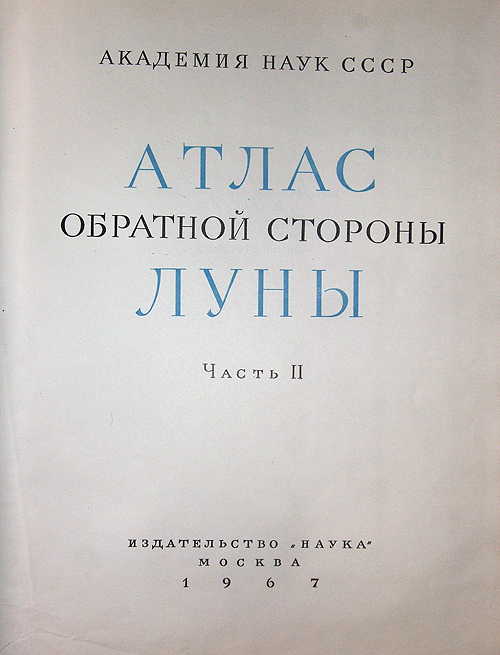
Atlas Obratnoj Storony Luny (Tsast’ 2)
Akademiya Nauk SSSR Moskva 1967
1:10 000 000
(It is centered at 120 deg)
Sketch of the farside
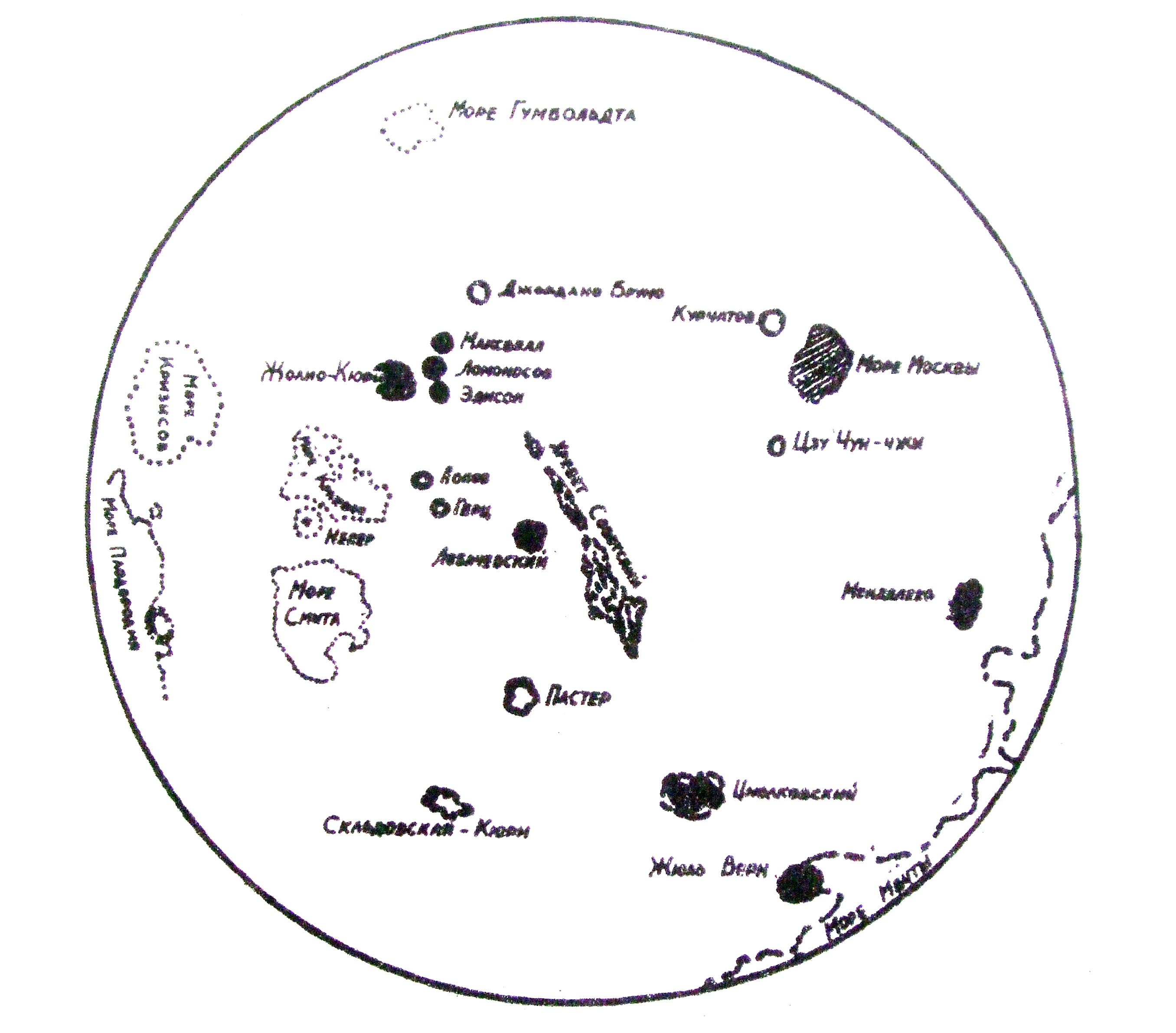
From the front page of: Issledovanie Luny v SSSR Ed. V. Polyakov
The 1st scheme from Luna 3 images.
„No one wanted to make a map from Luna 3 materials. At Sternberg Institute it was done by the leadership of prof. Lipsky who tried to make the map. The images were of bad quality but it was important to make maps since this way they could give the first names of the farside so they had to find relief features. Some were found, mostly dark spots. The mapping was succesful even from this low quality materials, since most of the features later proved to really exist.” (Shingareva 2009)
